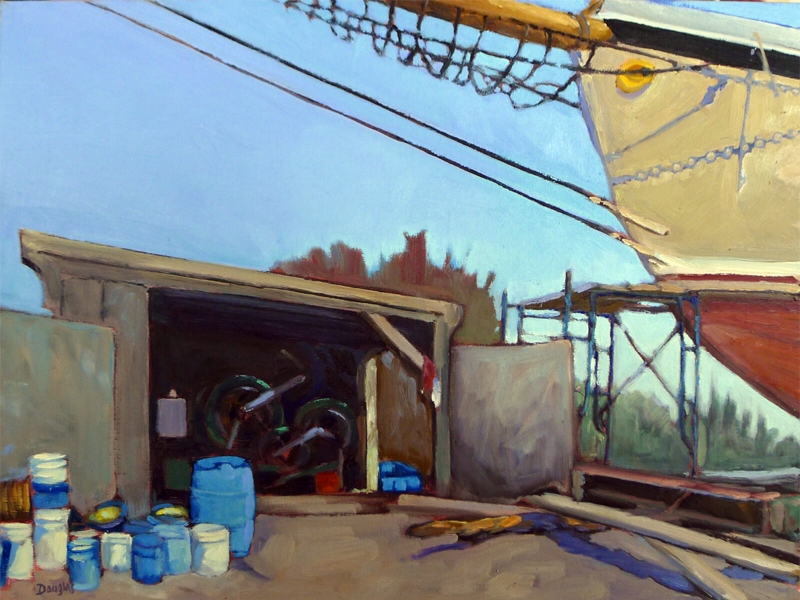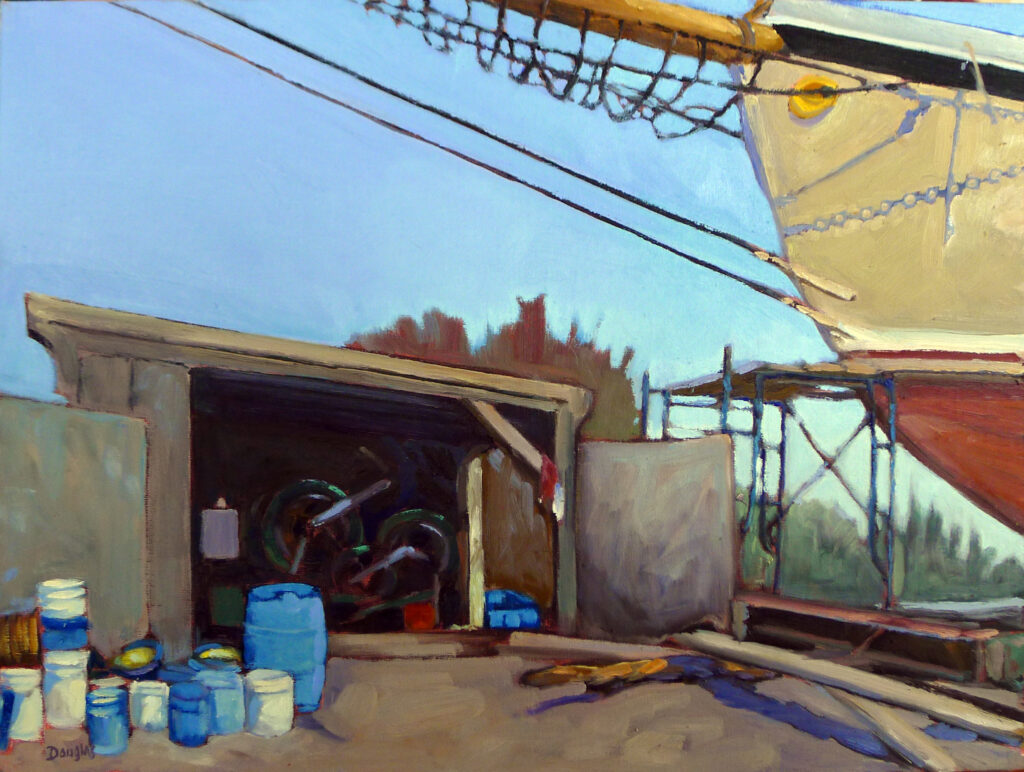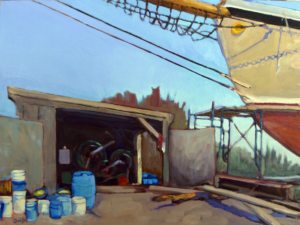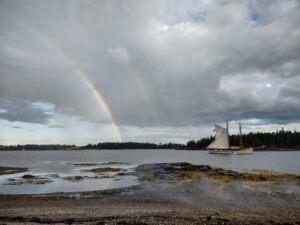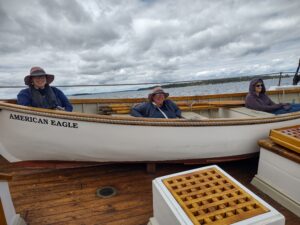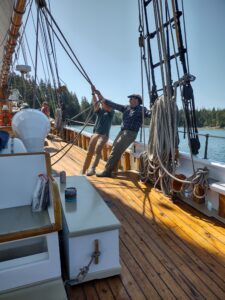In the muck of a muddy Maine spring in 2016, I wandered into the North End Ship Yard, where I met Captain John Foss and the crews of Heritage and American Eagle. I spent the next seven weeks documenting the annual ritual of hauling schooners from the water onto the ways.
Smaller vessels spend the winter months on land, but these big schooners stay in the water. While our harbors do freeze, it’s more a form of thick slush than rigid ice. (And there’s nothing so fascinating as watching ice ripple on a cold winter’s day.) The Atlantic is only marginally colder in winter than in summer, so below decks it is warmer in the water than out. The hulls are better supported in the water, and there’s no risk of the planks drying out.
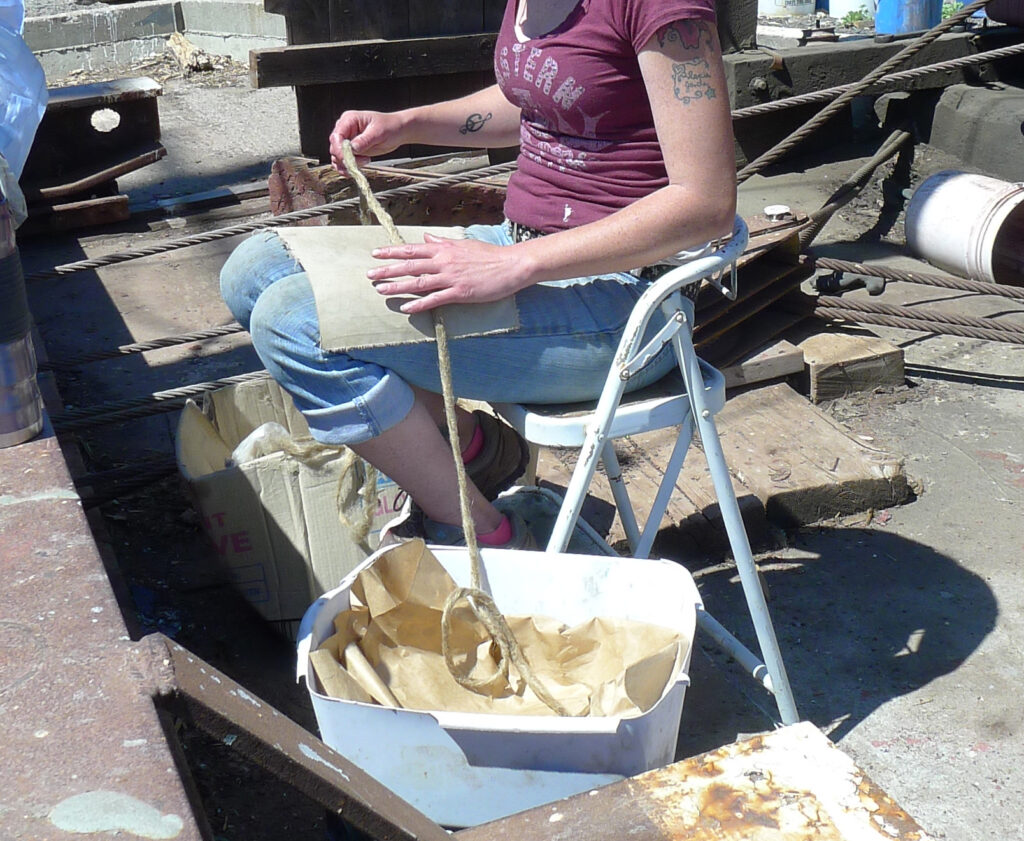
They do come out briefly each spring, however, when they’re readied for the coming season. There’s a device called a marine railway, which is essentially a cradle that’s winched out of the water with the boat aboard. North End Ship Yard has one of these, which is powered by an old quarry engine that’s older than dirt.
The hulls are scraped, caulked and painted, planking is replaced, and the Coast Guard comes by and looks things over. A few days later they slide gently back into the water, where the real business of sanding, scraping, varnishing, mending, tarring, polishing, etc., commences. ‘Fit out’ is much like aging actors slapping on the greasepaint and adjusting their stays for another arduous summer performance.
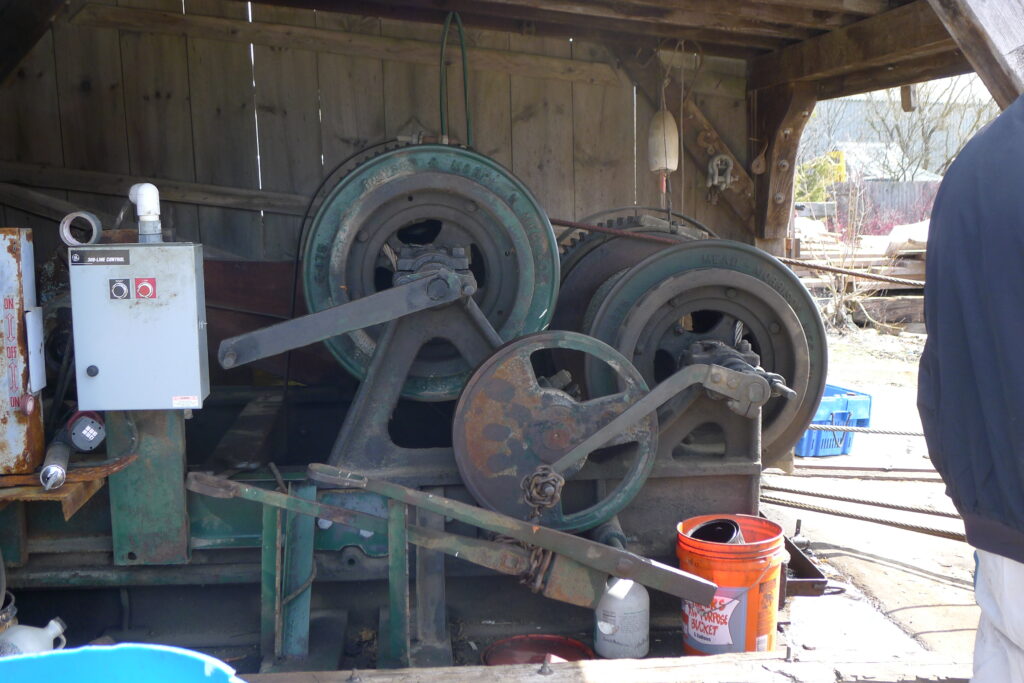
For the crew, it’s exhausting work. “I would love to work on a schooner for just one season,” I recently told Candice Kuchinski of the ketch Angelique. At her look of horror, I explained that I wasn’t looking for a job. My back is too darn old for fit out. Hoisting sails is hard enough; fit out is brutally difficult.
“How much does a Maine windjammer cruise cost?” people sometimes ask. That depends on the length of the cruise, its home harborage, and whether there are specialists (musicians, ecologists and, yes, artists) aboard to enhance the trip. But having watched the months of preparation that happen before these behemoths ever take on a passenger, I’d say they’re worth every penny.
Reserve your spot now for a workshop in 2025:
- Advanced Plein Air Painting, Rockport, ME, July 7-11, 2025.
- Sea and Sky at Acadia National Park, August 3-8, 2025.
- Find Your Authentic Voice in Plein Air, Berkshires, MA, August 11-15, 2025.
- Immersive In-Person Fall Workshop, Rockport, ME, October 6-10, 2025.

